Introduction
Dimensions indexes research inputs and outputs and the connections between them using linked data. Items indexed include grants, publications, citations, clinical trials, patents, and policy documents. It contains more than 100 million publications - scholarly journal articles, books, book chapters, preprints, and conference proceedings. Dimensions also points to Altmetric records, when they exist. While IUPUI does not have a subscription to Dimensions Analytics, anyone can request a free account or use it without creating an account.
The free version of Dimensions allows you to view:
- publications, citation information and researcher profiles
- linked materials such grants, patents, clinical trials, datasets, policy documents and altmetric attention
- a range of metrics including the Relative Citation Ratio (RCR), citation count, recent citations and altmetrics
- full text of open access articles
- trends in a field over time
This recipe will show you how to gather:
- citation counts
- Field Citation Ratio (FCR)
- Relative Citation Ratio (RCR)
- the assigned Fields of Research (FOR)
What you need
Before you get started, we recommend having a copy of the cv handy and a file to record the data. We use Excel, but if you prefer Word tables, those work too. A sample table structure is below.
| Citation or Title | Citation count | FCR | RCR | Fields of Research (FoR) |
| Opel, D. J., Schwartz, J. L., Omer, S. B., Silverman, R., Duchin, J., Kodish, E., ... & Orenstein, W. (2017). Achieving an optimal childhood vaccine policy. JAMA pediatrics, 171(9), 893-896. | 15 | 9.24 | 1.54 | Paediatrics & Reproductive Medicine (1114) |
| Yang, Y. T., & Silverman, R. D. (2014). Mobile health applications: the patchwork of legal and liability issues suggests strategies to improve oversight. Health affairs, 33(2), 222-227. | 68 | 23 | 3.25 | Public Health & Health Services (1117), Applied Economics (1402) |
Searching Dimensions
Dimensions has several options for searching (DOI, title, abstract, keywords, PubMed ID) and filtering. For the purposes of gathering publication metrics, we recommend searching by DOI or title.
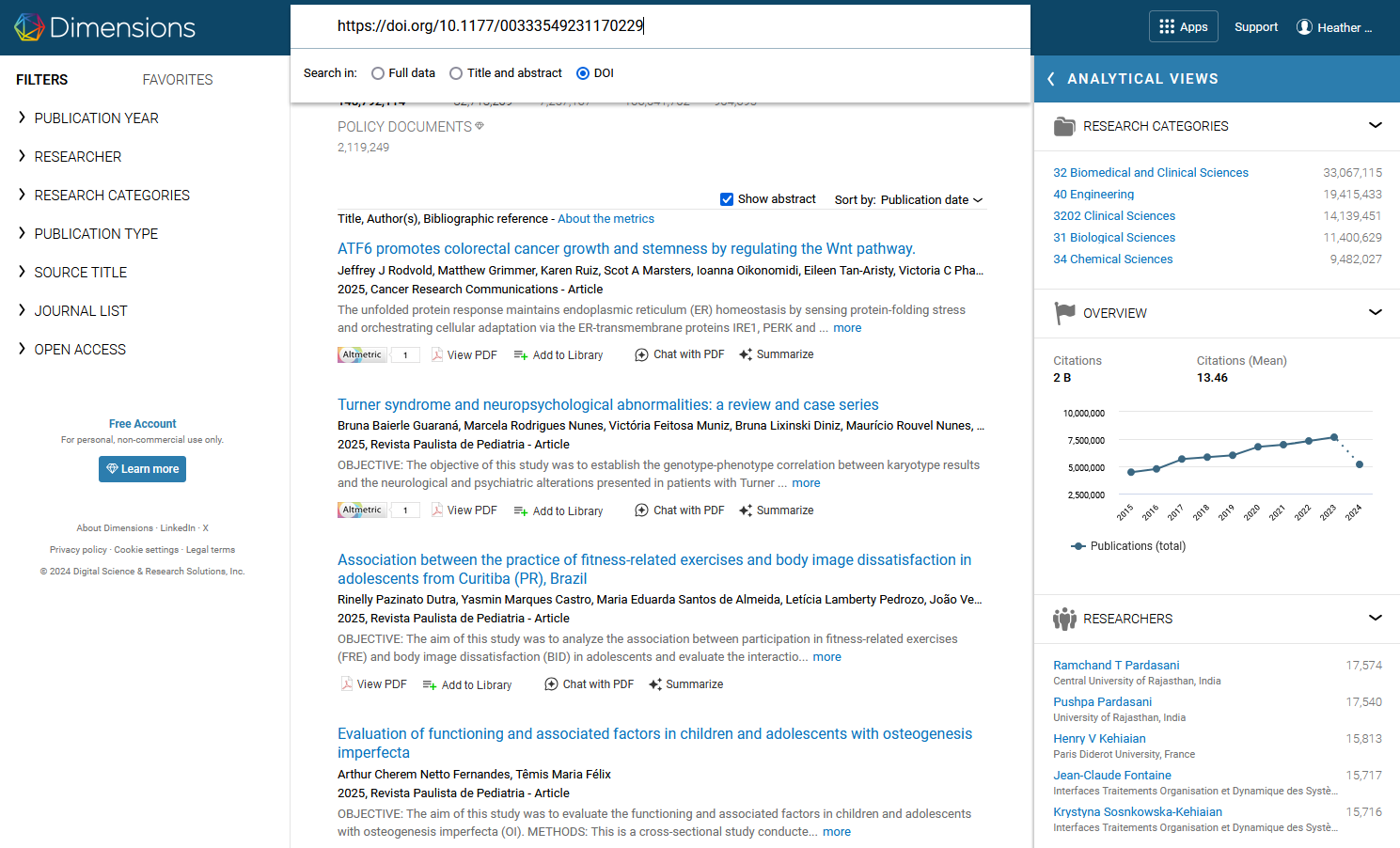
If the author has a relatively unique name and has not published under multiple names, searching by Researcher may locate most or all of their publications.
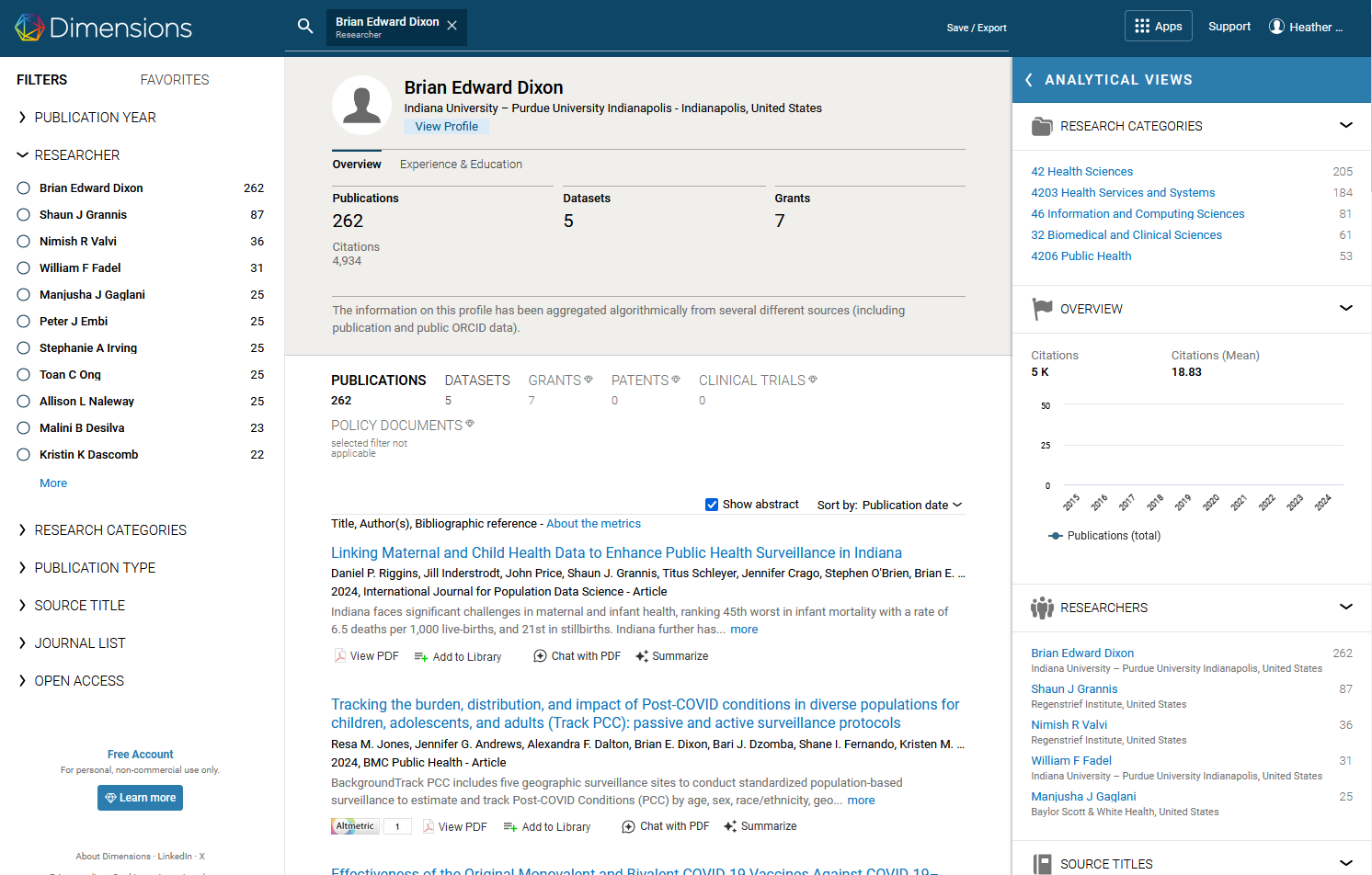
Viewing item details
Once you find the correct publication, click on the title to view the item record page. The box titled Publication metrics shows the Dimensions Badge and Altmetric Badge, where available. The metrics associated with the Dimensions Badge include total citations, recent citations, Field Citation Ratio (FCR), and Relative Citation Ratio (RCR). For more context about these metrics, click on the Dimensions badge.
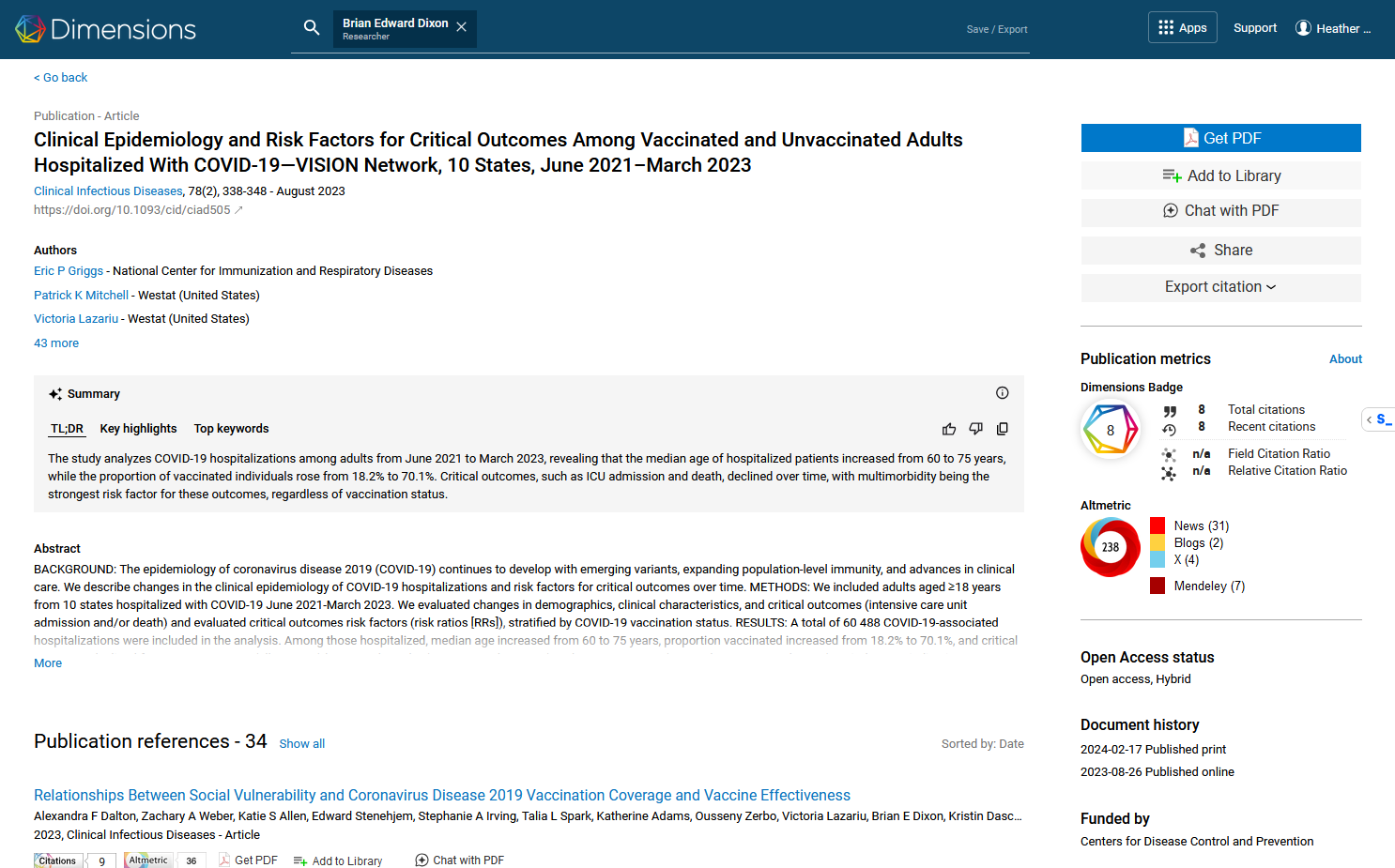
Dimensions metrics details
The Dimensions details page contains three tabs: Summary, Citations, and Citing research categories.
The Summary Tab includes more detail about the four pieces of data in the Dimensions badge: total citations, recent citations, Field Citation Ratio (FCR), and the Relative Citation Ratio (RCR).
The FCR and RCR are normalized citation metrics that enable comparison across fields of research. The Field Citation Ratio is available once a product has been cited and after two years of publication to generate an appropriate comparison group for the calculation. The Relative Citation Ratio is available for NIH-funded products only.
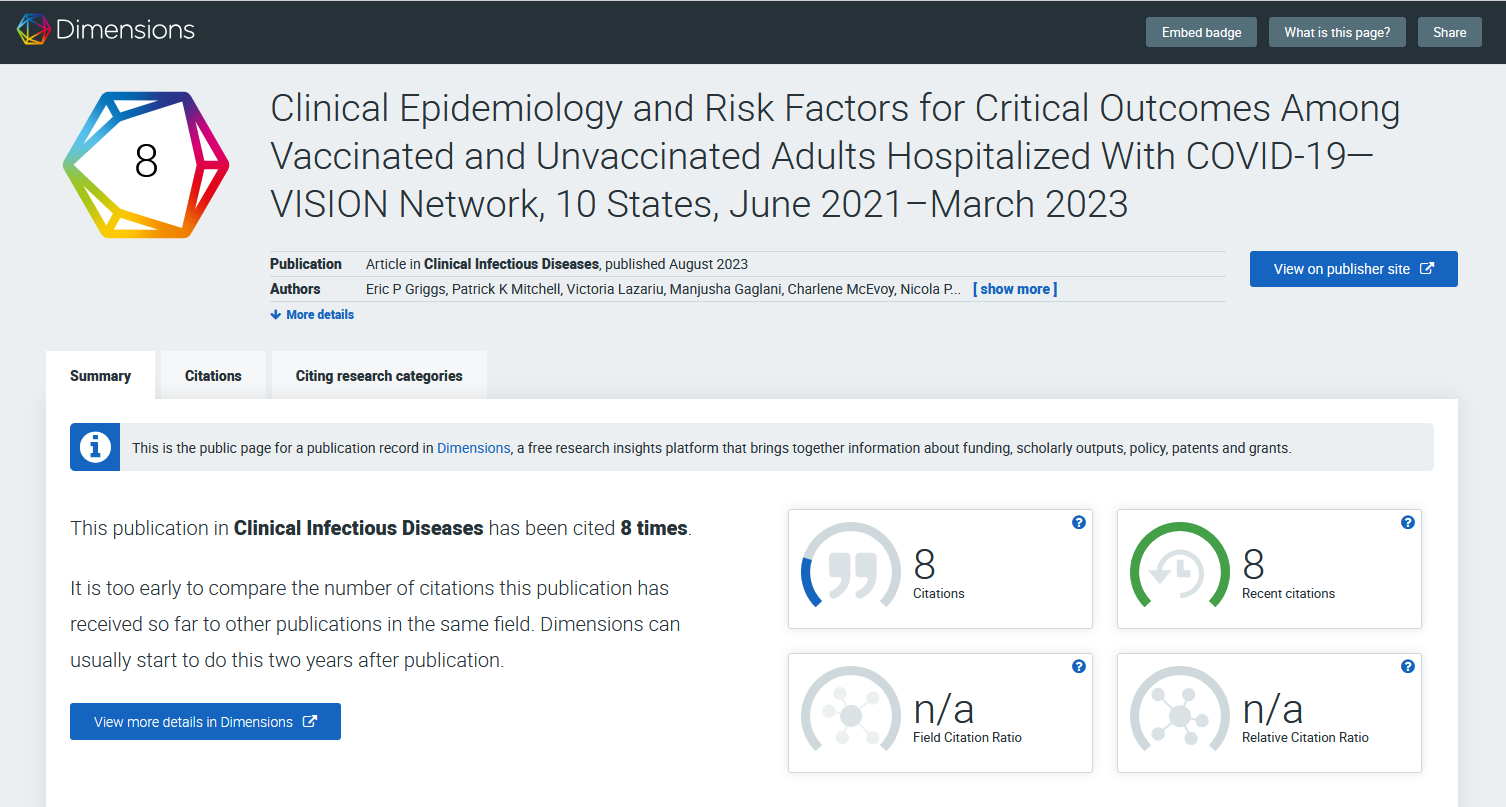
The Citations tab shows total and recent citations, a graph of citations received annually, as well as links to the citing documents.
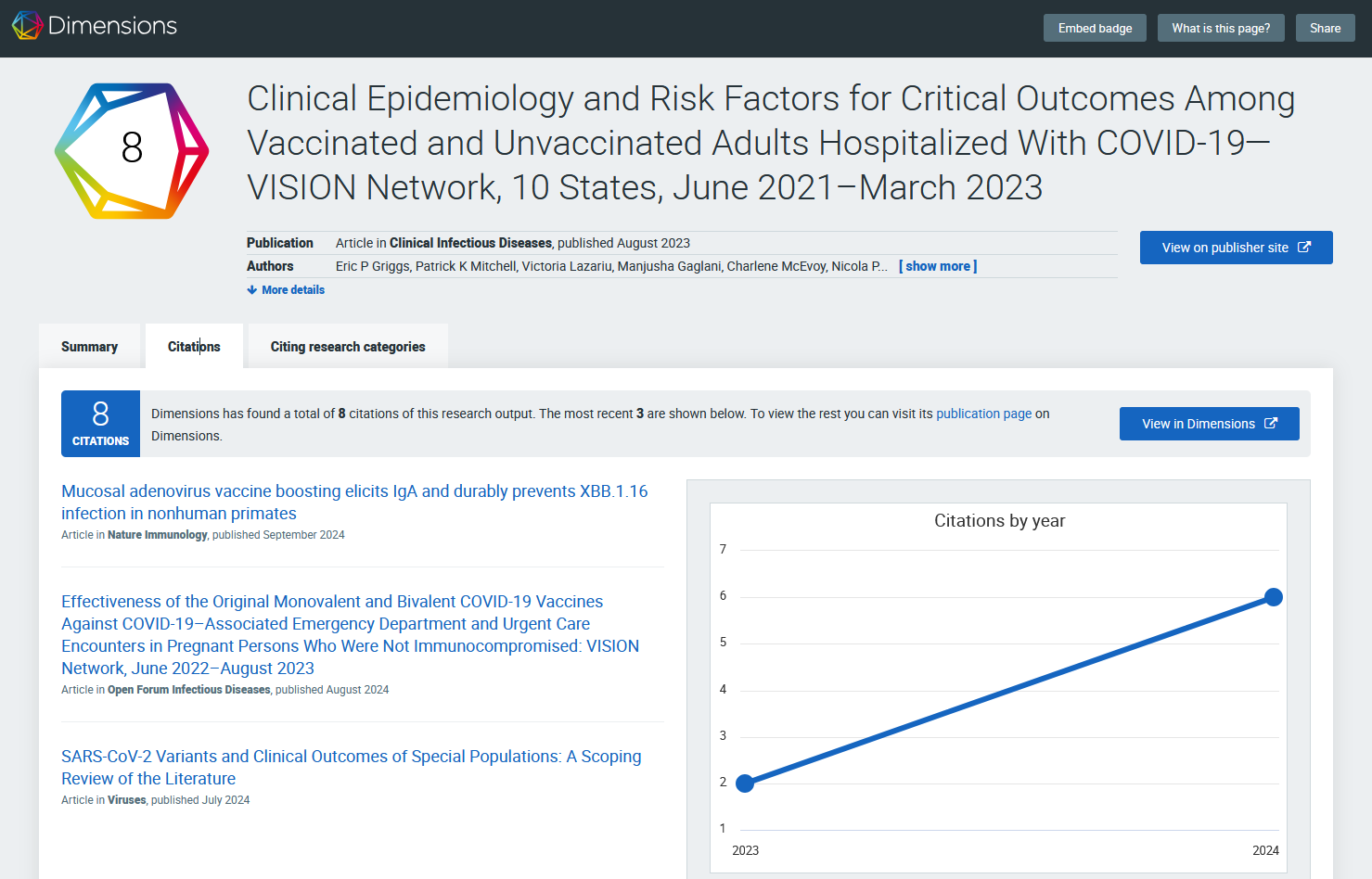
The Citing research categories tab displays the Fields of Research (FOR) of the documents that cite the article of interest.
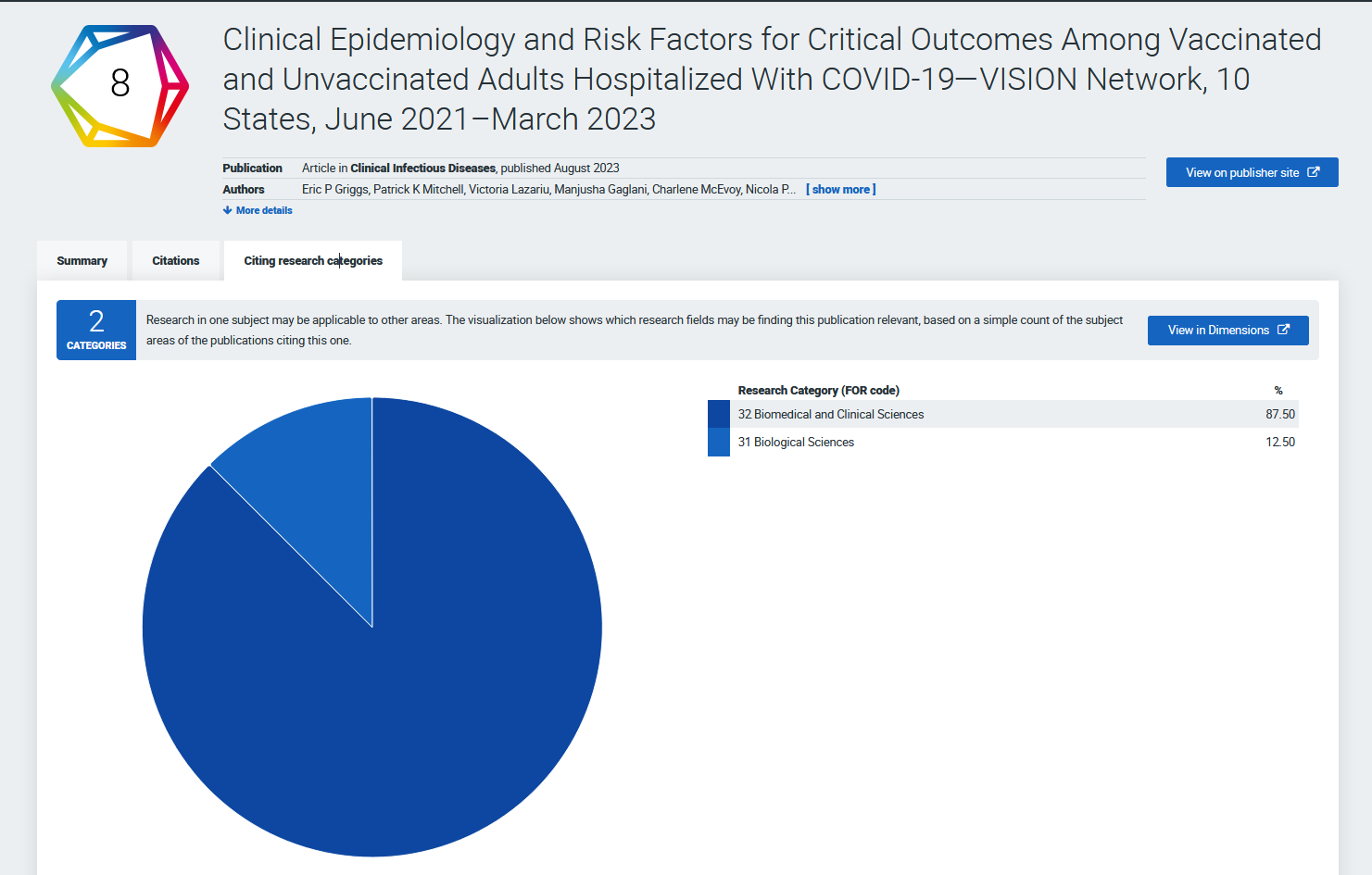
How to use and talk about citation metrics
Citation metris are generally regarded as strong evidence and can be useful indicators of usage and scholarly impact. However, remember that scholars cite for many reasons, so citation metrics should not be considered an indicator of quality. Below, we have provided a few examples for how you might talk about or use citation metrics as evidence in your dossier.
Compared to similar articles in the same field, this work has been cited 2.4 times more than the average. (Field Citation Ratio, Dimensions).
This article has received 20 citations (Dimensions) and has a Field Citation Ratio of 9.79 (Dimensions), which indicates that it has received nearly ten times as many citations as other articles published in 2015 and in the field of Public Health & Health Services.
This article has a Relative Citation Ratio of 5.14 (94th percentile), which means that this article has been cited five times more than NIH R01-funded articles published in the same field and year.






